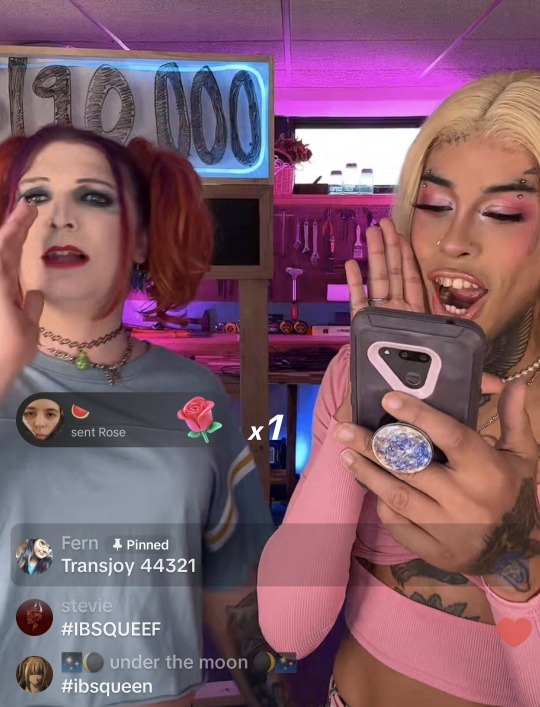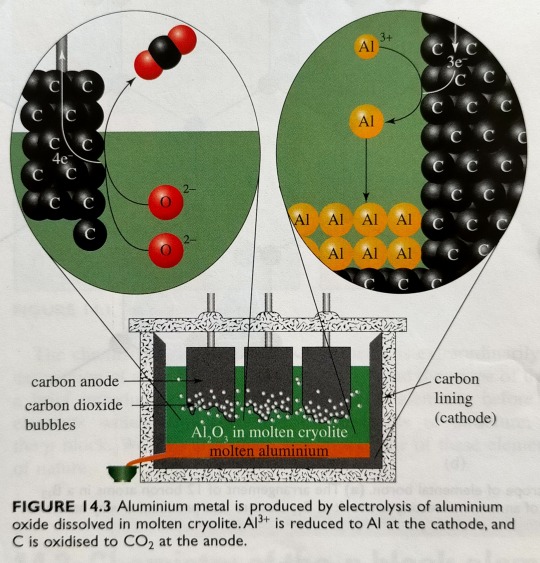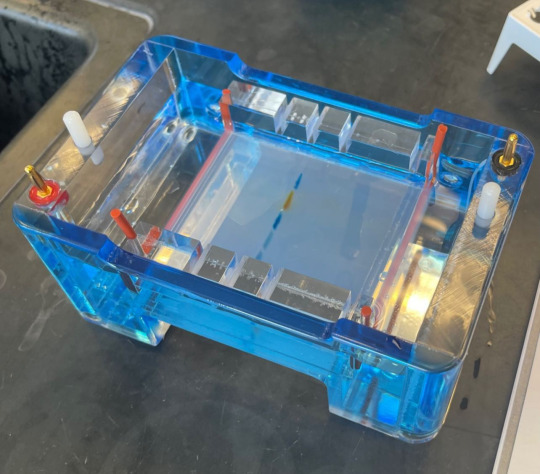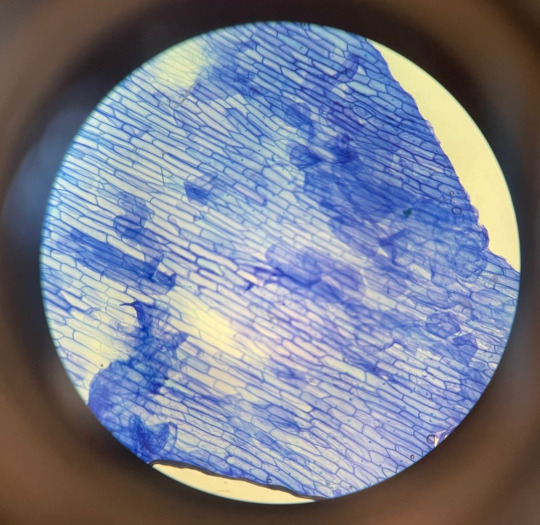#electrolysis
Text
Jory Alluringskull and trans handyma'am Mercury Stardust's third annual tiktokathon for trans healthcare has JUST STARTED!!
Last year with the help of so many amazing people they raised two million dollars - and this year they're gunning for a historic FOUR MILLION!!

There has never been a better reason to be on tiktok! Come and join in the stream for three days of riotous fun for an amazing cause!!
You can read more and donate right now HERE to help provide gender affirming care to trans people in need! Or text transjoy to 44321 if you're in the united states!
200,000 dollars have been raised already after only one & a half hours and it's only up from here!
Read about the charity Point of Pride here!
Find the lives at Jory's tiktok page here & Mercury's tiktok page here!
You can also watch the live on youtube here on Mercury Stardust's youtube channel!
#i'm not sure if my main link will work for more than one day lol#trans joy#trans#trans healthcare#trans affirming care#trans rights#gender affirming care#mercury stardust#binders#gaffs#electrolysis#point of pride#people are reporting the live so there may be technical issues on tiktok but the event rolls on!#lgbt#lgbtqia#lgbtq community#rainbow community#lgbtq#lgbtqiia+
73 notes
·
View notes
Text
Electrolysis is a process that uses electricity to create hydrogen and oxygen molecules from water. The use of proton exchange membrane (PEM) and renewable energy for water electrolysis is widely regarded as a sustainable method for hydrogen production. However, a challenge in advancing PEM water electrolysis technology is the lack of efficient, low-cost, and stable catalysts for oxygen evolution reaction (OER) in acidic solutions during PEM water electrolysis.
Continue Reading.
59 notes
·
View notes
Text


89 notes
·
View notes
Text
Electrolysis
So some info on this hair-removal procedure that I thought might be useful for anyone starting it or considering starting it. PSA: I'm not a doctor or an electrolysis tech, so this is not Expert Advice or anything. I'm just an interested amateur undergoing the procedure, with access to the interweb's collected knowledge.
I stuffed it under a readmore because it's long.
How's it work?

Basically they poke a needle into the hair follicle, and then pass electricity through your body. You'll be holding onto something or putting your hand in (salt) water to provide a path for the current.
This generates sodium hydroxide (aka Lye) though electrolysis, hence the name. The lye kills the follicle, and then the technician pulls out the hair with tweezers. If done correctly, that hair will never grow again.
Importantly: This is an external procedure. You see that pink layer around the follicle? That's a layer of skin. Your skin is not being punctured by the needle, it's simply sliding down the pocket in your skin that the hair lives in. So the needles need to be sterile because of the risk of accidental puncture, but this isn't like surgery or anything.
Does it hurt?
Yep. You're being zapped. Generally in my experience the needle doesn't hurt, but the current being on does hurt. It's not too severe, and importantly IT CAN BE ADJUSTED. See, the amount of time it takes to generate lye depends on the voltage used. If the pain is too intense to manage, your technician can lower the voltage. This'll make it take longer per hair, but it will hurt less. (And similarly, if it doesn't hurt much at all, they may be able to go faster by turning up the voltage)
It's not a "shock" type zap, where it's unexpected and high-intensity. You don't jump with fright. It's more of a "burning" (but without heat) kind of zap, where it's uncomfortable/painful over several seconds, slowly increasing and decreasing in intensity. You may want a stress ball to squeeze.
What should I do before the appointment?
Ask your technician! Generally they'll have a sort of pre-appointment appointment to talk about what you need to do, or they'll send you instructions.
But basically you're gonna want to have short hair in the area you're getting electrolysis done on: My technician suggested 1-4th to 1/8th inch (3-7mm). The idea is that it's long enough that they can grab it with the tweezers, but not so long it curls or gets kinky (lewd). I use an electric razor which comes with one of the shields for cutting hair to a specific length (which my wife bought to buzz her undercut!) and it works great. I just give it a once over the day before my appointment.
You should also make sure you're hydrated. Being dry makes it harder to get the hairs out. Try to do this the day before or early in the day: Not only because it takes a while for the water to make its way through your body and affect the tissues, but because you don't want to have to interrupt the hair removal session to go piss.
I tend to take some painkillers an hour or two before my procedure. Ibuprofen and Tylenol/Acetaminophen/Paracetamol are both over the counter and can be safely mixed, and work well for this. My roommate used to vape some THC before going into her appointments, that may also be an option for you.
You should also ask about topical numbing cream and if your technician wants you to use it. Sometimes it's not a good idea because it can make your skin slimy, but it can definitely help.
The stuff I use is topical lidocaine 5% cream: You will typically find this in the hemorrhoids section of your pharmacy: it's butt cream. Just make sure you are getting a kind that's not got a bunch of added "flavors" like aloe and oatmeal and coloring and the like. You want the most generic cheapest kind.
You put it on "like you're icing a cake". I get the 30g/1oz tubes, and I basically use one per session. You don't rub it in, you just cover the skin with it, as thick as you can. You want to put this on an hour before your session so it has time to sink in. After putting it on, you should cover it with some plastic wrap so it'll stay in place and not get on your mask or shirt or glasses. (You will probably still get it on your shirt. That's okay, it washes out easily)
You probably want to ask your technician which area you're going to be working on before the appointment, so you know where to cover. It's a waste of cream (and less effective) to cover your whole face if they're just going to be working on the moustache area! Speaking of which...
What should I do after the appointment?
Again, ask your tech, but general stuff is:
Ice the affected area. You'll probably have some redness and swelling from the procedure, so this helps minimize that.
Keep that area clean. Don't scratch it, and have some kind of sanitary wipes (I used witch hazel wipes) for when you forget and touch it accidentally. Get a new/clean mask and be careful with headphones, so you don't introduce any surface bacteria into the area.
Again, painkillers. They'll help.
This'll last 1-3 days depending on how fast you heal. It's not hugely noticeable on my skin, but be warned that it might be, like you got a big sunburn on your face.
How do sessions go / how many will it take?
So the thing about electrolysis is that it's not exactly fast. Basically they have to stick a needle in every single hair on the area of skin they're de-hairing, and typically this is the face, which has relatively dense hair. It takes a long while. So for example, in one of my first sessions, they basically started at my right sideburns and went down, making it maybe 2 inches (5cm) down my face, over 2 hours.
It's slow going. You will need a bunch of sessions. I'm sorry. The electrolysis tech who runs the clinic I go to said it could be anything from 30 sessions to 600, depending on your hair density and how much area needs to be covered.
But once they've gone over a section, that section is done, right?
Sadly, no. Hair goes through a cycle of growth-regression-resting, over a cycle that's dependent on where on the body it is and your particular genetics (and some environment conditions! this is why stress can make your hair fall out). If the hair has been shaved before and is in the resting phase, it's not there for the technician to get at. They'll need to go over that spot again to get the hairs they missed. How much this needs to be done depends on your body's hair growth. And sometimes you can be "done" and then a year later some hair pops out of nowhere because it decided to take a long nap and you need to go back for touch-ups. Those will be minor and quick, however, since you'll have far fewer hairs to need to be treated.
It's permanent in the long run, right?
Absolutely. And I mean that: ABSOLUTELY. It is the gold standard of hair removal. Properly electrolysised hair simply cannot come back: you are hairless there forever. There is no longer any living follicle in your skin to grow hair.
Is there only one type of electrolysis?
Nope! There's 2, or 3, or 2 and a half. or, arguably, only one.
Basically the idea of "zap someone with electricity to get rid of hair" comes in three(ish) forms:
Galvanic Electrolysis
Thermolysis
Blend
The one I explained is Galvanic Electrolysis. You pass DC current through a follicle, it creates lye, the lye kills the follicle. This was the first one, and is nearly 150 years old. It was originally developed to treat ingrown eyelashes, which could cause blindness.
The second, Thermolysis, doesn't actually use electrolysis, so technically it's a type of "Electrology", the practice of hair-removal-with-electricity, of which Electrolysis is only one method. Instead of creating lye in the follicle, the probe is instead an RF transmitter, broadcasting several watts of high-frequency radio waves at a frequency where they'll be absorbed by the hair matrix, kinda like a microwave. This creates high temperatures (50°C/122°F) causing electrocoagulation, basically denaturing the proteins and killing the follicle that way.
The third (or 2.5th) method is Blend. As you might guess, this is simply mixing both of the above methods. It's relatively easy to do, as they both need an electrical probe, and you can just build one machine that switches between the two methods or combines them at the same time.
My particular electrolysis clinic manager feels very strongly that galvanic electrolysis is the way to go. It's slower than thermolysis or blend, but she believes this is more reliable and has fewer side-effects on the skin (as it's possible but hopefully unlikely for the skin to be damaged by the heat of thermolysis). But I think those are mainly her opinions rather than a scientific consensus, so you may want to do your own research if your local clinic does Thermolysis or does Blend. Maybe she's wrong.
Are there other methods/how effective are they?
Kinda. So the big competitor to electrolysis is Laser Hair Removal. Despite the name, the FDA (who regulates hair removal tech in the US) says it's not actually a form of hair removal, just a form of "hair reduction". It's not allowed to be advertised as permanent hair removal because of this.
Basically it works something like Thermolysis: A laser is fired at the skin, using a wavelength of light that will be mostly not absorbed by the skin, but will be absorbed by the darker and denser hair follicles. They'll heat up from the laser, and electrocoagulate, and die.
This has several advantages over electrolysis: It's far faster, it requires less training for technicians, and it's less painful. Note that that's less painful, not "painless". It still hurts, as you're being SHOT IN THE FACE WITH A LASER. (It also has the side-advantage for trans femmes that you can keep shaving while doing it, vs electrolysis which requires some hair growth)
So, the problems: First of all, even when working, it is less effective in general. You're unlikely to get all the follicles at once, and you'll need many passes over the same area to get anything like consistent coverage.
The second drawback is that it can have some very negative effects on your skin. If you can get photosensitive rashes, firing a laser at the skin will probably cause them to show up really badly. It also (anecdotally, at least) can have same negative effects on skin that thermolysis sometimes causes: all that heating causes damage to the skin, making it harder, less smooth, and potentially darker from the heat damage. Making sure to ice your face after treatment can help with this, reportedly.
But the third and final drawback is probably the biggest one: it's very color-sensitive. Basically for laser to work, you want VERY DARK HAIR on VERY PALE SKIN. If you have any other combination, it's simply not going to be very effective. The laser light needs to pass through the skin without being absorbed, then hit the hair follicle and dump all its energy there. If your hair is blonde, it'll keep going. if your skin is dark, it'll end up absorbing all the energy instead of the follicle, and they're basically giving you a suntan instead of hair reduction.
And even for someone who is pale with dark hair, it can STILL not be terribly useful! See, I'm in my 30s, so I have a couple grey hairs.
At least, that's what I thought, until I got laser hair removal. It turns out something like 5-10% of my facial hair was grey, and once you remove the 90-95% of the dark hair, guess what's left? 100% grey hairs! Basically laser hair removal just gave me a grey beard. Whoops.
And finally, there's IPL: Intense Pulsed Light. There's less to say with this one except that it's basically the same as laser hair removal, just at lower power levels and less specific wavelengths of lights (ie, it's more full-spectrum). Reportedly this gets near the effectiveness of laser (it's like 66% reduction after 6 months of treatment, vs 71% for laser), but can be done at home by the user. It has all the same side-effect problems, but worse as the light isn't as precisely targeted to a specific wavelength. If you can't get anything else, it's an option, but I wouldn't recommend it unless you're very pale with dark hair and no history of photosensitivity.
On a side note, both IPL and Laser do involve flashing very bright lights at your face. I don't think they're going to be repetitive or quick enough to cause issues with photosensitive epilepsy, but you should definitely ask your doctor if that's an issue. You can't close your eyes to avoid the flash, it will travel through your skin and hit your retinas through closed eyelids, it's both absolutely wild and a little scary.
How expensive is it?
Obviously this is going to vary a lot as healthcare is a nightmare, but generally if your health insurance covers trans-related things like hormones, it'll be covered for at least the face.
If it's not covered, the price will of course vary with your location and the clinic you go to, but it's not going to be cheap. Sessions are going to be like 1-2 hours and they're trained medical professionals. They get paid for their time. In the cheapest areas of the US, you're looking at like 30$ an hour, and in the most expensive, 130$ an hour.
Is it just for the face?
Nope! Anywhere you can get hair, you can do electrolysis. chest, back, arms, legs, crotch, whatever you want (I don't know if anyone has done their whole head to become permanently bald, but probably!)
Combined with the last question, that'll probably not be covered by insurance, as they'll be considered "cosmetic" rather than "medically necessary" (other than some non-face electrolysis that's done before bottom surgery to avoid issues with hair growing inside neovaginas or having a hairy neopenis).
Areas outside the face tend to go far faster as you don't have the same hair density there.
But what do you actually DO in an electrolysis session?
Lay down on a massage table in a dark room, with one hand in a metal bowl of salty water. A tech wearing a flashlight on their head pokes you with needles and zaps you for a few seconds, yanks the hair, then repeats the process. You can talk (if they're not working on the chin or other areas where it'd cause problems) and we usually chat for a half hour or so about random stuff, before settling into mostly silence, listening to some music playing off a streaming service. I spend most of the time thinking about stuff to write, either stories or programs.
It's not a continual procedure, they're repeatedly poking and pulling, so you can interrupt them whenever if you need to use the bathroom or shift position. I was worried that my ADHD would have trouble handling "do nothing for two hours" but honestly it's not too bad in my experience.
Is this only a trans thing?
Absolutely not! I'm writing this from that perspective, but anyone can get electrolysis. For example, often post-menopausal women get it on their upper lip, as the hormone shift causes them to grow facial hair. But you don't need a big trans and/or medical reason to get electrolysis: You can just go "HEY I HATE SHAVING AND ALSO I HATE HAVING HAIR" and decide to do it. You'll probably have to pay out of pocket for it, but it's your money. Have fun.
Just keep in mind that it is absolutely permanent. Make sure you are certain before doing it, because I think your only option if you change your mind would be an expensive hair transplant (if that'd even work. I'm not certain, off the top of my head)
224 notes
·
View notes
Text
Figure 14.3 shows a schematic representation of an electrolysis cell for aluminium production.

"Chemistry" 2e - Blackman, A., Bottle, S., Schmid, S., Mocerino, M., Wille, U.
#book quotes#chemistry#nonfiction#textbook#schematic#aluminum#electrolysis#carbon#carbon dioxide#cathode#anode#cryolite#oxidation
25 notes
·
View notes
Text
Tiny Blog Stuff: sharing some lab stuff from college
Electrolysis of dyes

Cell Structure through a microscope (plant cell and onion cell)


Photosynthesis/Celluar Respiration with a cabomba plant

Fermentation of yeast

I like lab and biology but lectures always makes me sleepy…
#biology#biology lab#electrolysis#plant cells#cell structure#microscope#photosynthesis#cellular respiration#fermentation#college
36 notes
·
View notes
Photo

Seawater split to produce green hydrogen
Researchers have successfully split seawater without pre-treatment to produce green hydrogen.
The international team was led by the University of Adelaide's Professor Shizhang Qiao and Associate Professor Yao Zheng from the School of Chemical Engineering.
"We have split natural seawater into oxygen and hydrogen with nearly 100 percent efficiency, to produce green hydrogen by electrolysis, using a non-precious and cheap catalyst in a commercial electrolyzer," said Professor Qiao.
A typical non-precious catalyst is cobalt oxide with chromium oxide on its surface.
"We used seawater as a feedstock without the need for any pre-treatment processes like reverse osmosis desolation, purification, or alkalization," said Associate Professor Zheng.
Read more.
100 notes
·
View notes
Text
PSA about hair removal
This post is for anyone who's seeking hair removal, but especially for the many other trans women / trans fems I see being given misinformation by laser or electrolysis technicians, especially in the US and UK 🥺
Laser hair removal
* Permanent hair reduction.
* Always shave the area closely beforehand. Laser is less effective if you do not shave.
* Ideally look for a clinic that uses something like a Candela GentleMax Pro or newer. Such machines are less painful & more effective than ones like any of the Alma Soprano devices.
* 6-8 sessions will typically be the sweet spot before moving on to electrolysis.
* If the technician or clinic tell you not to use numbing cream, that's a massive red flag against their knowledge. A technician does not need pain feedback from you to know they're using safe levels!
Electrolysis
* Permanent hair removal.
* You must let the hair grow at least a few mm before a session.
* Ask your electrologist for an estimate of how long it will take to clear an area, as their expertise and speed will vary. For example, NHS Scotland estimates it can take 250-400 hours to fully clear a face of facial hair. My own highly-experienced electrologist estimated 100-150 hours max for me, but has nearly cleared my face in under 25 hours. She's not yet taken more than about 120 hours to clear someone's face / neck fully.
* Again, numbing cream is not only absolutely safe, it's in fact highly recommended if you cannot afford local anaesthetic injections.
* For most folks, it's as much a mental challenge as it is about physical pain management. Even with numbing cream and strong painkillers, it's gonna hurt, especially in 2 hour+ sessions and around sensitive areas (especially the top lip and around the mouth).
* Aloe vera gel helps with post-electrolysis swelling and recovery.
Numbing cream
* The most common brand of numbing cream is EMLA, which is 2.5% lidocaine and 2.5% prilocaine.
* The strongest cream I've found without prescription is Tattoo Numbing Cream, which is 5% lidocaine and 5% prilocaine.
* If you can get a stronger cream on prescription at an affordable cost, this is definitely something to consider.
*To help with absorption, exfoliate and clean the area before applying cream, apply 60-90 mins before a session, and cover in an air-tight, water-tight dressing (cling film / plastic wrap works well).
Sadly, I can't provide much information on local anaesthetic injections. In the UK, they're typically arranged either by a medically-trained specialist at an electrolysis clinic or separately (such as at a dentist's) immediately before attending a session.
#Hair Removal#Laser#Laser Hair Removal#Laser Hair Reduction#electrolysis#electrologist#trans#transgender#trans women#trans fems#queer#LGBTQ#LGBTQ+#LGBTQIA#LGBTQIA+#LGBTQIA2S#LGBTQIA2S+
9 notes
·
View notes
Text
A lot of people told me electrolysis would be a very painful experience but other than the pain from having to grow my hair out, the needles being inserted, the probes sitting there, and having my hair pulled out, it's a really pleasant relaxing experience.
#nearly fell asleep a couple times during it today#trans#trans woman#transgender#trans girl#trans feminine#electrolysis#laser hair removal
3 notes
·
View notes
Text
Very cool!
12 notes
·
View notes
Text
I've been thinking about the golden ratio essence ...

found my insta story so nice and decided to share it here too ...
..
#identity v#luca balsa#ルカ・バルサー#第5人格#identity v edgar#identity v postman#identity v grave keeper#identity v painter#cuteness#idv embalmer#idv luca balsa#identity v luca balsa#idv prisoner#identity v prisoner#identity v andrew#idv grave keeper#electrolysis
15 notes
·
View notes
Text
Transgender pro tip: dont waste your time and money with laser hair removal and save up for electrolysis
The fact laser isnt permanent pretty much makes it worthless, and will just be more expensive in the long run if you have to keep doing it. Electrolysis is a bitch but at least the hair is GONE for GOOD
not to mention laser doesnt work for all hair and skin types
#transgender#laser hair removal#electrolysis#im so mad at 4 years ago me for getting laser#now i gotta go through the whole process for electrolysis anyway#ddont make the sames mistkaes as me...
3 notes
·
View notes
Text
I can't spell electrolysis, so I keep calling it "not laser" (as in "not laser hair removal")
So my electrolysis tech is in my phone as "John No Lasers". I can't help but read this as a judgment of him.
Haha, this guy has no lasers! What a loser! I have lasers for DAYS.
176 notes
·
View notes
Text
An example of an electrolysis apparatus, called an electrolysis cell or electrolytic cell, is shown in figure 12.25.

"Chemistry" 2e - Blackman, A., Bottle, S., Schmid, S., Mocerino, M., Wille, U.
#book quotes#chemistry#nonfiction#textbook#electrolysis#electrolysis cell#electrolytic cell#electrochemistry#sodium chloride#electrons#cathode#anode#sodium#chlorine#cation#anion
15 notes
·
View notes
Text
4 notes
·
View notes